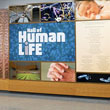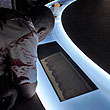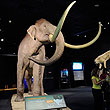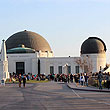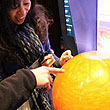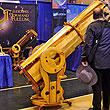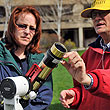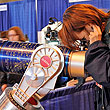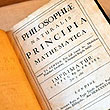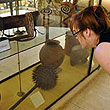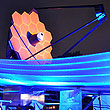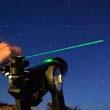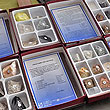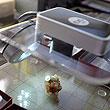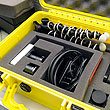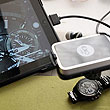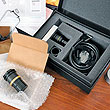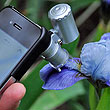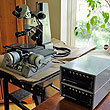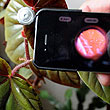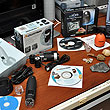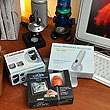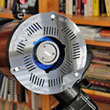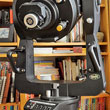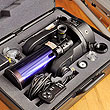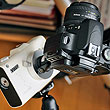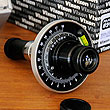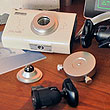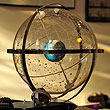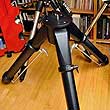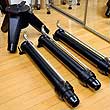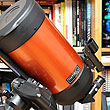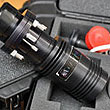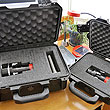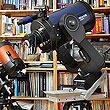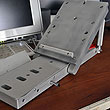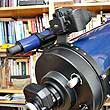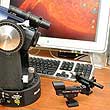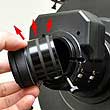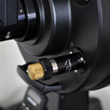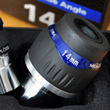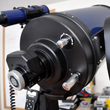After our recent post on the EXO camera stand, we started getting comments and suggestions on geology gear. That took us by surprise as we didn't realize that RainyDayScience readers were also avid rock collectors. As we had stated on several occasions, while we do have a rather extensive and well cataloged rock collection, we are not rock collectors. Our collection is from from AMEP. However, after reading some of the emails on fluorescent rocks, we found ourselves intrigued by the topic of fluorescent minerals. As we do have fifteen samples which are suppose to glow under the appropriate lighting conditions, we decided to take a look at the phenomenon of "glow-in-the-dark" rocks.

Our first task was to do some research and acquire a good UV light source. Our search soon pointed us to Ultraviolet Tools in TX. They are one of the world's leading ultraviolet lighting manufacturers and have a large selection of UV gear for those with a passion for glow-in-the-dark rocks.
As we are just starting out in the world of fluorescent minerals, we wanted to get a lamp which will give us the most flexibility. After learning that 90% of all fluorescent minerals need a shortwave UV light to be seen, a unit with just a shortwave UV source would have been sufficient. However, after looking over UV Tools' offerings, we decided to go with the Enhanced 6 Watt Shortwave/Longwave UV Field Lamp so that we would be able to see the widest variety of "glows."
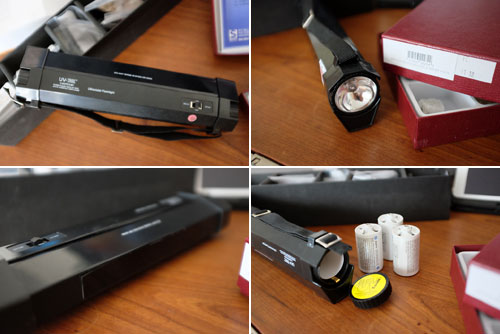
The 6W field unit was designed to emit both short and long UV light, is highly portable, and very reasonably priced. Here are the specs:
- Lamp Size: 10 1/2" x 2 1/2" x 2"
- Wattage: 6W
- Batteries Required: 3 D-size cells
- Bulbs Included: Shortwave 254nm tube, Longwave 375nm LED
The body of the unit is made of black plastic. The longwave UV light is on the end of the body and the shortwave UV is along the length. There is an adjustable hand strap along the length. A three-position switch is located on the other end of the battery compartment. Note that the shape of the body angles the light for illumination when placed on a flat surface. Nice.

We took the unit apart to get a sense of how it was put together. The caps on the ends twist off to release the collars. With the collars removed, we can slide off the covers and see into the battery compartment, the longwave UV bulb, and the shortwave UV bulb. There is no rattle or play when we put everything back together. This speaks well to the design and the quality of the construction.
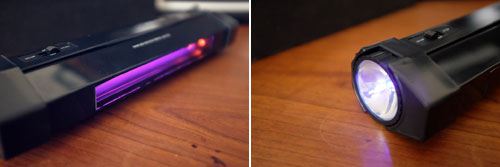
Both UV bulbs are user-replaceable and are available from UV Tools directly. The shortwave bulb has a rated life of 4000 hours. We were unable to find any longevity information on the LED, but we would not be surprised to see that it lasts much longer.
UPDATE: UVTools informed us that the LED bulb is rated to be around 50,000 hours. So unless you somehow break it, it will last pretty much the life of the lamp.
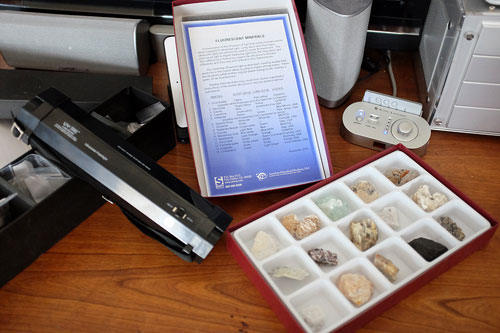
Different samples in the collection responded in very different ways to the UV light. Some lit right up even when the light was far away. Others did not respond until the light was much closer. Some had different color responses depending on whether it was short or long-wavelength UV light. Still others would only fluoresce when the light was held on the sample for a period of time. Posted are pics of some of the brighter and more colorful ones. We were surprised at the alien-looking as well as the spotty nature of the glow.
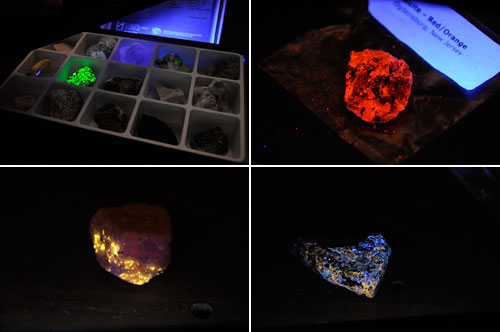

The one which glowed the easiest and brightest was Willemite. This zinc ore, discoverd in the early 1800s by William I of the Netherlands, is highly fluorescent under shortwave ultraviolet light. This mineral may be found in many places, but our sample is from the Franklin Mine in New Jersey.

We will have more to say on fluorescent rocks once we get some experience shooting in this spectrum and under low-light high contrast conditions. Also, we will be looking for places to go where we can bring the UV lamp along to find some of these rocks in their native settings. Readers should feel free to suggest locations which are within a reasonable drive from Boston (under 2 hours). It will give us an excuse to get out of the office! [Permalink] -Glow In The Dark Rocks
|


